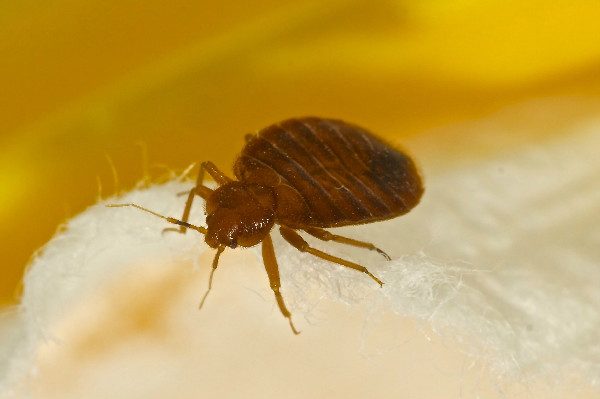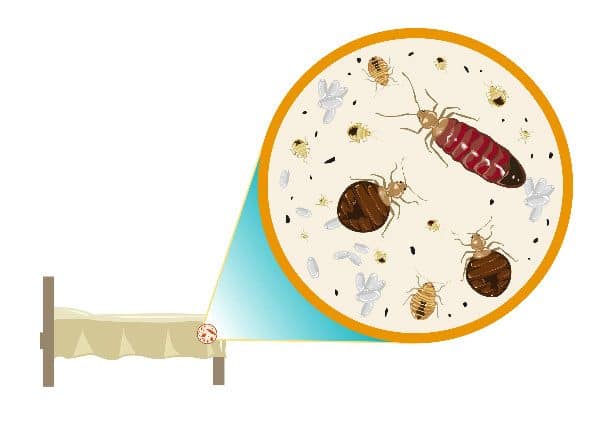How Do People Get Bed Bugs?
Like most bugs, bed bugs come from outside the house. If you live in an apartment or any other shared living situation and have a bed bug infestation, it could be that they came from an adjoining apartment through cracks in the floors and walls.
Pesticide foggers like bug bombs don’t get rid of bed bugs, but instead, displace them – they go searching for a new home. For that reason, you want to avoid using bug bombs to deal with the infestation.
If it makes you feel any better, if you live in a shared housing situation, it’s possible that your infestation is the result of one of your neighbors bug-bombing an infestation.

Introducing used furniture to your house is another way bed bugs find their way inside. Be wary of used furniture, especially upholstery. Check and treat any pieces of furniture carefully before bringing them into the house. Check used clothing and books as well.
Finally, if you stay somewhere with bed bugs, they can also hitch a ride on you, your family, or your guests, either via your clothing or in your luggage.
How to Detect Bed Bugs

Bites on your skin are the first sign of a bed bug infestation. If you have unexplained bug bites, especially first thing in the morning, you might want to start checking around for other signs of an infestation.
Check your mattress for the visual signs of bed bugs. If you have them, you may see red or rust-colored stains, indicating crushed bed bugs.
You might also see tiny black dots, which are bed bug excrement, and egg shells (around 1mm, a pale yellow color) resulting from the bed bugs reproducing. Finally, you may see the bugs themselves walking around.
Make sure you check every surface down to the box spring, and anything surrounding the bed as well. Check curtains, baseboards, behind wallpaper, and even under the carpet.
Bed bugs prefer fabric and wood to plastic and metal, so check any wooden furniture as well. If you suspect you have bed bugs, call a professional exterminator to confirm it for you.
Bed Bugs and Your Health

Bed bugs bite because they live on blood, either human or animal blood. They feed on your blood for about ten minutes, then swell and turn red. Their bites are painless but can become itchy, but unlike mosquitos, they are harmless and do not transmit diseases.
However, if you scratch the bites, you can cause an infection. What is one characteristic of bed bug bites?
They are numerous, and they have a tendency to appear in straight rows. If you see multiple bites arranged in a straight line, there’s a good chance you’re looking at bed bug bites.
How to Get Rid of Bed Bugs
The best way to get rid of a bed bug infestation is to call an exterminator. They’ve dealt with bed bugs before and know how to do a thorough enough job to keep them from returning.
An exterminator is your best bet, just to make sure you take care of the problem completely. However, there are some things you can do at home to get rid of bed bugs and to supplement a professional.
Treating an Infestation

Natural ways to deal with bed bugs include using hot water to wash all clothes, linens, and anything fabric that may have contacted the bugs. Heat will kill anything hiding in your linens. Use a dryer to dry everything as well, because a dryer will hit the bugs with a double dose of heat.
Just make sure you pay attention to the tags on the fabric, as your linens may be dry clean only. Dry cleaning can also kill bed bugs, but make sure you inform the dry cleaner of the possible infestation.









No comments